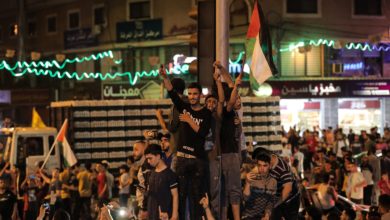While Yemen is suffering a massive humanitarian crisis, the U.S. is stepping up its involvement in the Saudi-led bombing campaign directed against the Houthi government and dramatically increasing strikes ostensibly targeting Al Qaeda. Predictably, the losers in this scenario are the literally starving Yemeni civilians who face the bleak choice between being killed in a U.S. or Saudi bombing strike, or suffering and possibly dying from malnutrition.
Regarding the humanitarian crisis, U.N. Emergency Relief Coordinator Stephen O’Brien said, “Well, it’s not just the number of people who are food insecure, which represents about 14 million out of the 26 million or so Yemenis, which is an enormous number for any nation to have to bear; it’s the fact that we have seen an increase in severe acute malnourishment, particularly in young children and in lactating mothers. We have seen a very severe deterioration in the number of patients needing dialysis services, access to oxygen, and where we need to see more antibiotics being brought in and medical facilities made available. These are seriously deteriorating.”
This ever-worsening crisis is a direct result of the Saudi-led bombing campaign, an intervention into its impoverished neighbor’s affairs after the Houthi rebels seized power in the capital of Sana’a and began a drive south towards Aden to consolidate control of the entire country. The Houthi seizure of power took place in the context of a four-way civil war and the aftermath of the Arab Spring in Yemen, which led to the stepping down of long-time President Ali Abdullah Saleh. Ironically, Saleh and forces loyal to him are now allied with the Houthis against the Saudi aggression.
The Saudi war could not have started without the collusion of the United States. That said, even within Congress there have been some voices in the wilderness opposing U.S. support for this brutal assault on Yemen. In September 2016, U.S. Rep Ted Lieu (D-Calif) introduced a bill with bipartisan support to block U.S. arms sales to Saudi Arabia, pointing to well-documented Saudi war crimes in Yemen. (Salon)
Meanwhile, for some time, the U.S. has had Special Forces “boots on the ground” in Yemen and has engaged in drone and other strikes targeting civilians including U.S. citizens of Yemeni descent, both practices justified under the rubric of the so-called war on terror against Al-Qaeda in the Arabic Peninsula.
Changes to Yemen policies under Trump administration
Bad as U.S. policy towards Yemen was under the Obama administration, things are taking a turn for the worse under the Trump agenda.
The New York Times recently reported that the U.S. under Trump has approved the “resumption of sales of precision-guided munitions to Saudi Arabia,” something that had been halted during the Obama administration allegedly due to concerns with civilian casualties.
Of course, those concerns of the Democratic president did not extend to its own actions; the U.S. engaged in its own strikes in Yemen and killed civilians. That said, the number of strikes under Trump has dramatically increased: 49 in the last month.
In addition, the administration has redefined the state of affairs in Yemen. British journalist Iona Craig explained this on Democracy Now:
“Yemen now, or parts of Yemen, anyway, [are] being regarded as areas of active hostility. Now that’s quite a technical term, but essentially what it means is those selected areas are put on a war footing the same as Iraq or Afghanistan.”
She went on to explain that, “Previously, under the Obama administration, Yemen was considered an area outside of active hostility, so there were different protocols put in place to ensure the prevention of civilian casualties.”
Craig added, “Obviously, that didn’t always work. I have spent many years covering Yemen and that included covering incidents of mass civilian casualties under the Obama administration.” However, with the changes introduced by the Trump administration, those protections get “chucked out the window and it means that civilian casualties are kind of allowed and only have to be proportional.”
More involvement in Saudi war
In addition to these changes, the U.S. is stepping up its involvement in the Saudi war of aggression by providing more logistical and intelligence support.
Iona Craig explained, “Now, the U.S. … has put in a request to become more involved, particularly in an offensive that the Emiratis, the [United Arab Emirates], who are part of the Saudi-led coalition, are looking to launch on the Red Sea Coast, particularly on the port of Hodeidah, which is a vital supply line for northern Yemen, which is the most densely populated part of the country, which relies heavily on that route for the import of food.” (Democracy Now)
Craig pointed out that the increase in support for the Saudi war against the Houthis is justified in part by the allegation that the Houthis are operating as a proxy for Iran. This story has been told for a long time; it was accepted in mainstream media for quite a while until someone did just the tiniest amount of homework and consulted someone knowledgeable about Yemen. The basis for this view is the fact that the Houthis are nominally Shi’ite Muslims, as are the Muslims of Iran. There are many, many other factors involved in the Houthi rebellion and seizure of power in Yemen and reducing the story to ‘Houthis equal Iranian puppets” reflects either willful ignorance or dishonesty.
Willful ignorance and dishonesty of course are hallmarks of the Trump administration; thus White House press spokesman Sean Spicer conflated the Houthis with Iran and Saudi Arabia with the U.S. in a press briefing in February.
The Yemeni people face a very dire situation of starvation and war. All progressive and revolutionary people must take a stand against the U.S.-Saudi aggression and in support of the right of the Yemeni people to self-determination.





